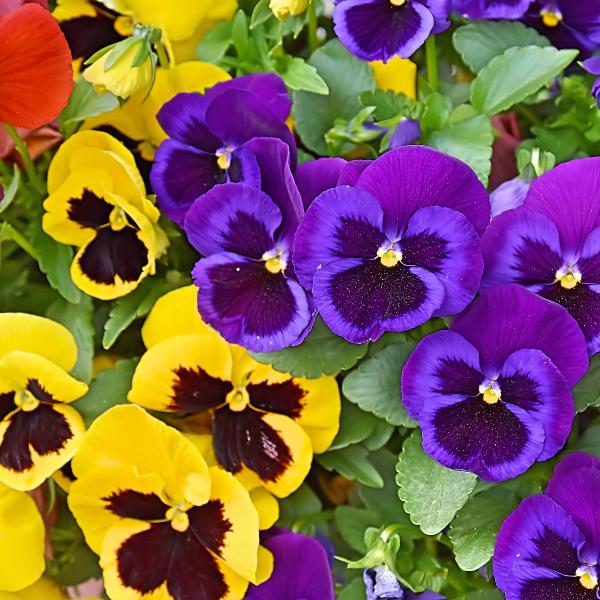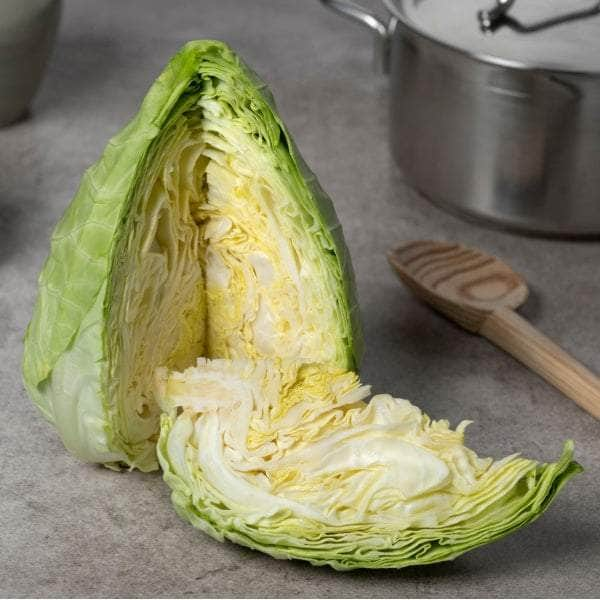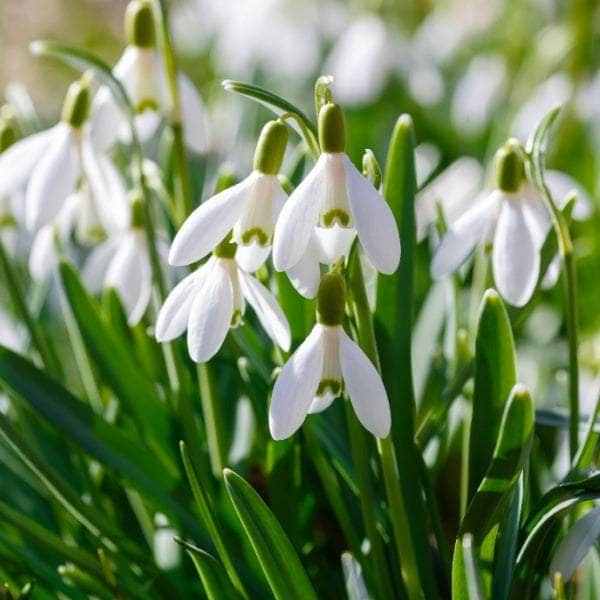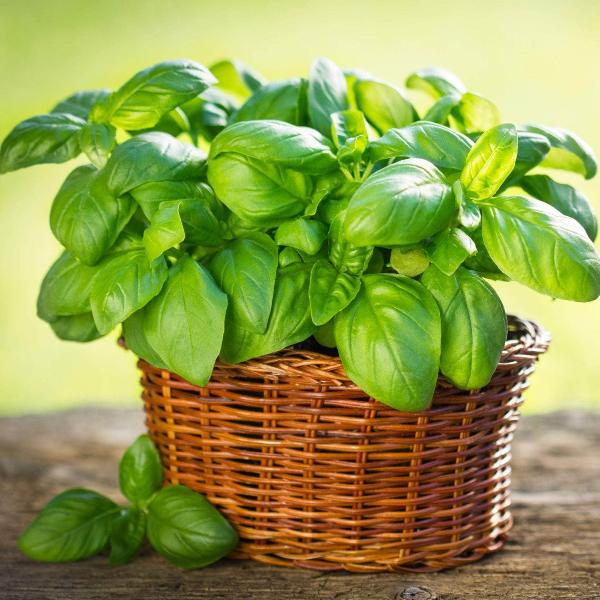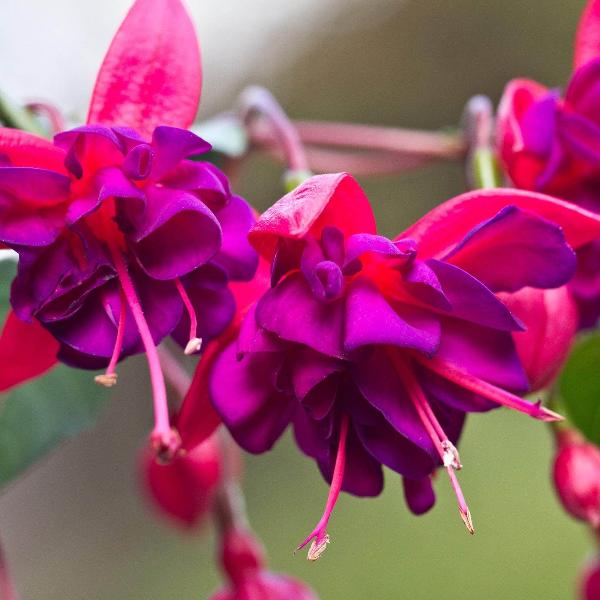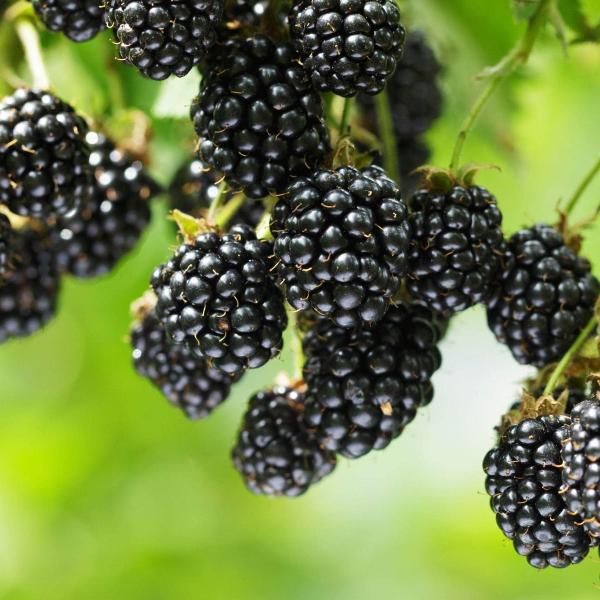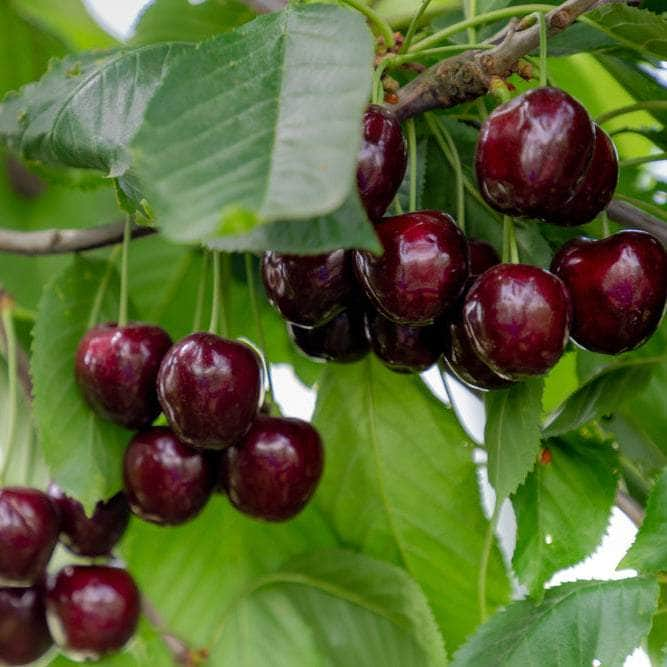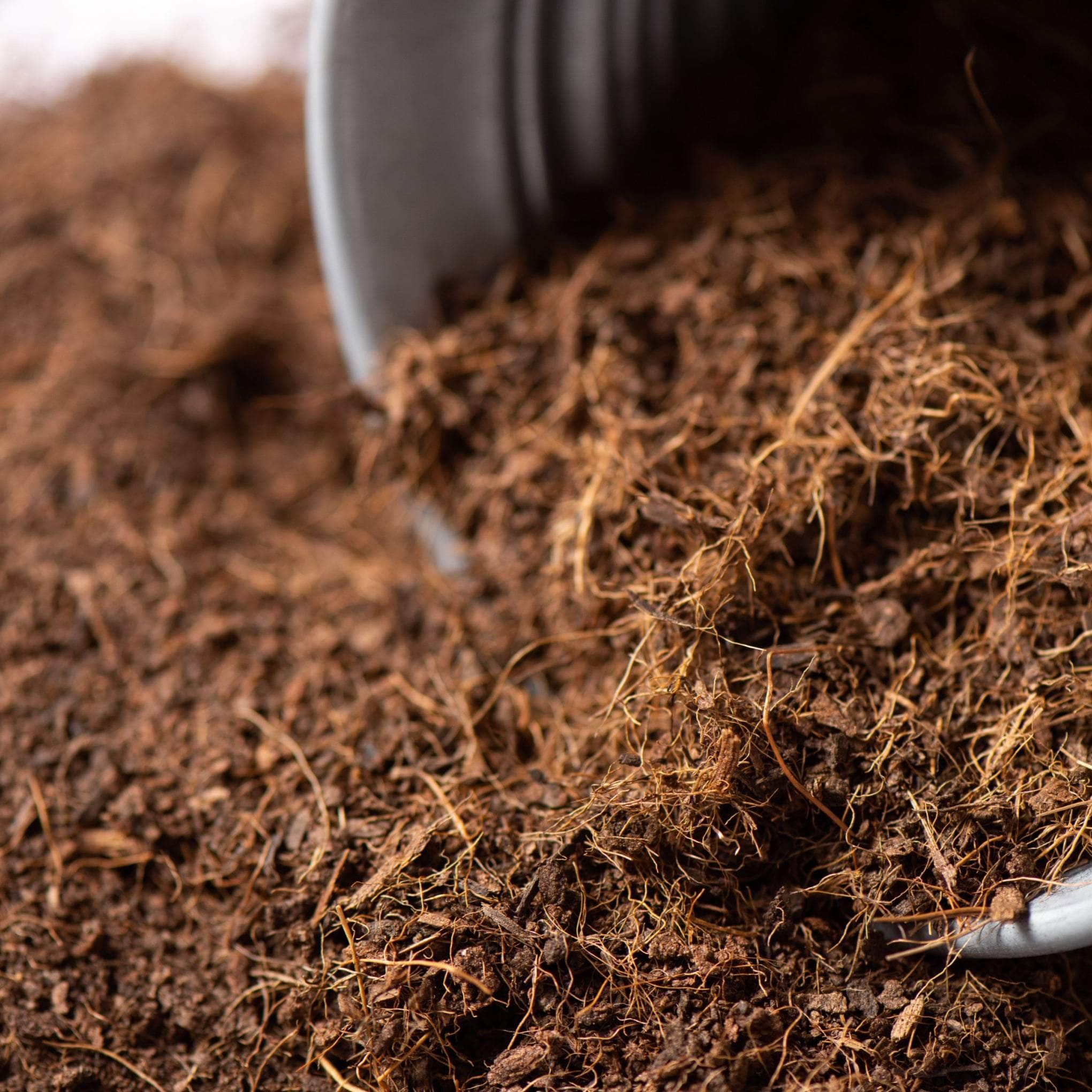The Comprehensive Guide to Growing Begonia Plants
Welcome to our comprehensive guide on growing begonias, the tender perennials that bring joy to any garden or home with their showy flowers. Whether you're a seasoned gardener or a novice, this guide will provide you with all the information you need to cultivate these beautiful plants successfully.
From understanding the different types of begonias and their cultivar selection to planting begonia tubers in multipurpose compost, we've got you covered. We'll delve into the specifics of caring for your begonias, including their light and temperature requirements, watering and feeding routines, and even how to prune and train them.
We'll also explore the art of propagating begonias and how to grow them in containers and hanging baskets. And, of course, we'll tackle common problems you might encounter and provide solutions to keep your begonias thriving.
So, whether you're growing begonias as house plants or in your garden, this guide is your go-to resource. Let's dive in and turn your green fingers into begonia-growing experts!
Understanding Begonias: Quick Facts

Begonias, with their vibrant blooms and diverse forms, are a gardener's delight. This section aims to provide a quick overview of these tender perennials, shedding light on their characteristics, care requirements, and suitability for different environments. Whether you're planning to grow begonias outdoors during summer or as a good houseplant, understanding these quick facts will help you make the most of these beautiful plants.
From their adaptability to different light levels and relative humidity to their resilience in low light conditions, begonias are truly versatile. They can thrive in a range of environments, from a well-lit window sill to a shady corner in your garden. Let's delve into the world of begonias and explore their fascinating features.
What are Begonias?
Begonias are a diverse group of flowering plants, widely cherished for their vibrant hues and mesmerising variation in foliage. Often labelled as a tender perennial, their allure is not merely confined to their aesthetics. Their ability to thrive both in low light environments and under brighter conditions makes them a favoured choice amongst gardening enthusiasts.
Primarily, many varieties of begonias serve as great houseplants. They are popular for their ability to adapt to a range of light levels whilst tolerating relatively low humidity. This cultivar grows quite happily indoors, making them perfect candidates for adding a dash of colour to home interiors.
Begonias are known for their resilience and adaptability. They can be grown outside in summer and manage to survive in locations subject to good light rather than direct sunlight. A point to note is that they prefer to be kept at a minimum temperature, suggesting their suitability for a controlled environment.
Begonia care encompasses some basic requirements like good light, an optimum level of humidity, and avoiding exposure to temperatures that fall considerably low. In essence, these radiant blooms don't ask for much but deliver much delight with their striking shapes and shades.
In true botanical lingo, Begonias are an epitome of 'low input, high reward' proposition. Embracing them in your pot or garden goes beyond mere decoration - it starts a fascinating journey of exploring a world where beauty and versatility coexist in every leaf and bloom.
Types of Begonias
Tuberous begonias – Emanating from fleshy tubers, these begonias are celebrated for their showy flowers displaying vibrant hues of pink, yellow, orange, red, and white, and are perfect for pot and hanging basket arrangements. Despite their inability to survive cold weather, they can be planted annually, or their tubers can be stored indoors during winter.
Fibrous-rooted begonias – As their name suggests, these begonias possess a typical root ball consisting of thin, fibrous roots. This category encompasses dwarf bedding types, namely wax begonias (Begonia semperflorens), characterised by smaller leaves and flowers, and are appropriate for containers, window boxes or lower echelons of a shady border as bedding.
Hardy begonias – These begonias are hardy enough to be left in-ground during winter in particular sheltered, warm spots, like Begonia grandis subsp. evansiana found commonly in the UK.
Foliage begonias – Grown primarily for their spectacular leaves featuring a spectrum of shapes, colours, and patterns. This category includes cane types like Begonia luxurians, which can reach about 2m in height and can add to the exotic-looking décor of patios or shady borders when moved outside in summer.
Begonia Inferno – A particular tuberous cultivar, Begonia Inferno provides several months of bright orange, weather-resistant flowers and does not require deadheading.
Begonia Cultivar Selection
When it comes to selecting your ideal Begonia cultivar, it's essential to understand the variations and unique characteristics each offer. Among the most favoured varieties include the 'Begonia Inferno', prized for its vibrant orange, weather-resistant flowers that offer visual explosion throughout summer. This tuberous begonia doesn't require deadheading, making it a less labour-intensive choice.
You may also be wooed by the charm of 'Begonia Giant Picotee Mixed', a tender perennial boasting large ruffled flowers in pleasing hues of pink, apricot, or yellow. Radiating colour from July to October, this cultivar simultaneously offers beauty and longevity.
Alternatively, those seeking a dramatic cascade of colour might opt for the 'Begonia Illumination Series'. Speak volumes with bright, weather-resistant flowers ideal for a hanging basket; their impact is further amplified when used outdoors in summer.
Nonetheless, 'Begonia semperflorens' silver and vibrant green foliage cannot be overlooked. As a tender perennial, it's perfect for those seeking a good houseplant that overflows with colour and texture.
The Begonia realm is a treasure chest of diverse cultivars, each with their unique allure. Whether you're seeking vibrant colour, weather-resistant characteristics, or visually engaging foliage, there's a Begonia cultivar ready to elevate your green space. Remember to provide them with good light, maintain a comfortable level of humidity, and shield from direct sunlight for thriving plants.
How to Plant Begonia Tubers

Planting begonia tubers can seem like a daunting task, especially for beginners. However, with the right knowledge and a little patience, you can successfully grow these beautiful plants in your garden or containers. This section will guide you through the process of planting begonia tubers, ensuring you have all the information you need to get started.
Before we delve into the specifics, it's important to note that the type of compost you use and the planting process itself are crucial factors in the successful growth of your begonia plants. Let's explore these aspects in more detail.
Choosing the Right Compost
Choosing the right compost is an essential step when it comes to planting begonia tubers. One might be tempted to opt for any available compost, but for optimal growth, a multipurpose compost is highly recommended. This is ideal as it accommodates for the diverse nutrients that begonia plants need.
For your begonia tuber plant to flourish, the compost should not be allowed to dry out. However, overwatering should also be avoided. It's a delicate balance that needs to be achieved to ensure the plant thrives. Always observe the surface of the compost. If it appears dry, it's time to water.
Another compost variant suitable for planting begonia tubers is sandy cutting compost. This type of compost is light and drains well, preventing waterlogging and encouraging healthy root development.
The compost you choose plays a crucial role in the overall health and vitality of your begonia tuber plants. Make an informed decision and your plants will thank you for it.
Planting Process for Begonia Tubers
When planting begonia tubers, the process you follow will determine, to a large extent, the overall growth and health of your plants. Here are the key steps to follow:
Loosen the Soil: Start by loosening the garden soil or the compost in your planting container. It is crucial to ensure that the soil or compost is adequately aerated to facilitate good root development.
Dig a Shallow Hole: Make a slight depression of about 1 inch deep.
Position the Tuber: Place the begonia tuber in the hole with the depression (indented side) facing upwards. This is typically done to prevent water from settling in the tuber's depression, especially in areas with wet spring weather.
Spacing: If planting multiple tubers in the same container or in a garden, ensure they are spaced about 3-4 inches apart.
Cover with Soil or Compost: Lightly cover the tuber with soil or your preferred multipurpose compost. The top of the tuber should barely be visible.
Remember not to overwater after planting. Wait until you observe sprouting before you begin regular watering. This precautionary step is necessary to prevent the tuber from rotting, which can easily happen if excessive moisture is allowed to settle on the compost's surface or in the soil. Also, consider using a potato fertiliser or high potassium feed from four to six weeks after final re-potting to enhance growth.
Growing begonias from tubers can bring great satisfaction. With this step-by-step guide, you should be able to plant your tubers correctly, providing an optimal environment for your begonias to flourish.
Caring for Your Begonias

Caring for your begonias is a rewarding task that brings joy to your home or garden. These vibrant houseplants, with their showy flowers, thrive in dappled shade and require careful watering and feeding to prevent root rot and promote robust blooms.
Whether you're growing them as a container indoor plant or planning to move them outside in summer, understanding their specific needs is crucial. From light and temperature requirements to the right plant food, every detail counts in ensuring your begonias flourish. Let's delve into the specifics of begonia care.
Light and Temperature Requirements
Begonias are wonderfully versatile, thriving both as an indoor houseplant or an outdoor spectacle in your summer garden. They are, however, slightly finicky when it comes to their light and temperature requirements. They revel in high light conditions but demonstrate an aversion to the direct, scorching heat of the sun.
Keep your begonias in a space with dappled shade, anywhere that shields them from the most potent rays of the day. If you're transitioning your begonias outdoors for a quick summertime holiday, remember to avoid south-facing spots which may cause leaf burn.
When it comes to temperature, begonias are partial to a range of about 15-22°C, or 58-72°F. This makes them ideal houseplant candidates as they can adapt to indoor heating during the colder months after they've spent a summer sojourn outside.
Interestingly, different begonia cultivars may exhibit variation in their temperature needs. Certain types like B. bowerae, B. masoniana and B. rex require a slightly higher minimum temperature of 13°C or 55°F, for instance. Always remember to adjust the requirements according to your begonia’s particular needs.
By tailoring the light and temperature conditions, you can provide your begonias with the ideal environment they need to put forth their showy, vibrant blooms, and in turn, bring joy to your household or garden.
Watering and Feeding Your Begonias
Begonias are undemanding houseplants known to bring immense joy with their showy flowers. When it comes to watering these tropical lovelies, remember, they are not too thirsty. Allow the plant's surface to dry out between waterings to prevent root rot or disease. This central aspect of your begonia care is particularly crucial for tuberous begonias, which are particularly prone to rotting in waterlogged conditions.
Feeding begonias requires a strategic approach to promote a robust bloom of flowers. To assist in bulking up the plants early in their growth, a high-potassium plant food like fish emulsion could serve well. As the buds appear, switch to an all-purpose fertiliser showing favouritism to flowering plants. Feeding begonias should ideally be a bi-weekly routine; however, dilute the plant food to half strength if you prefer feeding them weekly.
Container indoor begonias benefit greatly from a slow-release pellet fertiliser added to the compost at the time of planting. When the weather turns warmer, and the plant moves outdoors, transform the feeding routine, blending it with tomato feed. It's important to be mindful that you should stop feeding begonias by September as they should be encouraged to slow down for the year.
A healthy begonia is more than just regular feeding and watering. Regular pruning, plenty of light, and right temperature conditions complement these care aspects, ensuring your begonia thrives year-round, both as an indoor houseplant and outdoors in warmer months.
Pruning and Training Begonias
Pruning and training your Begonia plants are foundational in ensuring their healthy growth and impressive displays. This encompasses not just removing their dead and wilting flowers, a process known as "deadheading", but also encouraging enhanced flower production and preserving overall plant aesthetics.
An interesting aspect of Begonias, particularly the showy Begonia cultivars, is their production of both male and female flowers. The male flowers are notably more extravagant and contribute greatly to the spectacular appearance that makes Begonias a beloved house plant. However, in certain instances such as preparing tuberous begonias for a flower show, the removal of female flowers is advised to allow the male flowers to shine more prominently. Though this practice may come off as extreme to some gardeners, it does contribute to a more igniting display.
It is also crucial to note that Begonias possess a somewhat weak and brittle stem structure that calls for additional support in the form of canes, particularly as the plant continues to flourish. This additional support aids in mitigating the risk of breakage and allows your begonias to mature unhampered.
With pruning and training of your Begonias, pay heed to the 'dos' and 'don'ts', understand their biological peculiarities, and your Begonia plants will reward you with an outside-in-summer appearance that will bring joy to your home and garden alike. The stunning look of well-tended, fibrous rooted Begonia is, without doubt, worth the effort.
In summation, the attentive care for, training and pruning of your Begonia plants can do wonders which not only contribute to their health but significantly enhances their potential as a beautiful, long-lasting houseplant.
Propagating Begonias

In the world of gardening, the propagation of begonias is a topic that holds immense importance. This process is not only a cost-effective way to increase your begonia collection but also a rewarding experience for any plant enthusiast. Whether you're a seasoned gardener or a beginner, understanding the different methods of propagating begonias can help you maintain a vibrant and healthy garden.
From the fibrous-rooted begonia to the semi-tuberous variety, each type requires a unique approach to propagation. The right method, coupled with the right cultivar selection, can ensure a successful propagation process. Let's delve into the fascinating world of begonia propagation and explore how you can cultivate these beautiful plants in your own garden.
Propagation Methods for Begonias
Seed sowing: Fibrous rooted begonia seeds can be sown in pots or trays of seed compost during February or March. The temperature should be kept at around 21-25°C. The seeds are tiny and should be sprinkled onto the compost surface, covered lightly with silver sand, or alternatively, pots can be covered with cling film.
Leaf cuttings: This propagation method can be employed for certain begonia types, like Begonia masoniana and B. rex hybrids. Ideally, take cuttings in May or June from newly matured leaves. Cut through major veins about 2.5cm apart and place the leaf on sandy cuttings compost. Maintain a good level of humidity and temperature at around 18-24°C.
Stem cuttings: Fibrous rooted and cane-stemmed begonias can be propagated through stem cuttings, taken in April. The cuttings should be around 7-10cm in length and rooted in sandy cuttings compost with a bottom temperature of 18-21°C. Rhizomatous begonias may require longer cuttings to include a leaf node at the base.
Dividing rhizomatous begonias: This method involves division of begonias in spring. Ensure that each portion of the rhizome cut contains one or more growth points.
Semi-tuberous Begonias Propagation
Semi-tuberous begonias account for a significant portion of a gardener's calendar. Valued for their vibrant colours and long flowering season, these begonias provide a highly appealing choice in the world of plant selection. However, for these floral gems to thrive and reach their full potential, a thorough understanding of the propagation process is essential.
Unlike their fibrous-rooted counterparts, semi-tuberous begonias often need to be replaced yearly from cuttings. This method encourages new growth and ensures a consistent display of fresh and healthy blooms. After the flowering stage, the plants should enter a rest period. Maintain a reduced temperature of about 7°C (45°F) and limit watering for about six weeks, ensuring they never completely dry out.
As the rest period approaches its conclusion, prepare for the pruning phase. Prune the plants back to approximately 15cm (6in) of the base, and elevate the temperature. This process stimulates new growth, and is crucial in establishing the semi-tuberous begonia as a good houseplant and for its use in containers, accentuating your shady borders, or preparing them for their holiday care.
The appropriate propagation method, along with careful consideration of the time of year, effective watering techniques, and the recognition of the danger of frost, are essential. With a high level of humidity, the semi-tuberous begonia establishes itself remarkably well.
Growing Begonias in Containers and Hanging Baskets

Growing begonias in containers and hanging baskets is a popular choice among gardeners worldwide. This method not only allows for better control over the plant's environment but also adds a unique aesthetic appeal to your garden or indoor space.
Whether you're a seasoned gardener or a beginner, growing begonias in pots and hanging baskets can be a rewarding experience. With the right care and attention, these vibrant plants can thrive and bring a splash of colour to any setting.
Choosing the Right Container for Begonias
Choosing the right container for your Begonias is crucial for their healthy growth. Standard pots, hanging baskets or a different creative option can all be used. The key is to ensure that the container has sufficient drainage holes to prevent waterlogged soil, which can cause significant damage, particularly to tuberous begonias.
Semituberous begonias, for instance, require excellent drainage to prevent root rot. So, you might consider using porous materials like clay or terracotta for your container. These materials allow for better evaporation of excess water, thereby creating an optimal environment for these precious begonias.
However, if you're growing fibrous rooted begonias, they can welcome a slightly moister environment. This makes plastic or glazed pots a good choice. These containers won't promote rapid evaporation, ultimately requiring less frequent watering from you. A little bit of effort in selecting the right container can go a long way in ensuring the healthy growth of your begonias.
Size matters as well. Ensure your chosen container isn't too spacious or too cramped. A general rule to follow is that the pot diameter should be approximately one-third of the height of the plant. Ultimately, the chosen container should cater to the roots’ needs, promoting and not hindering their development.
How to Plant Begonias in Hanging Baskets
Begin by selecting a well-drained basket: Poorly drained baskets won't provide begonias' sensitive roots with the right environment. Look for a basket that is round and deep enough to comfortably contain the root mass of your begonias.
Layer gravel for drainage: To enhance the drainage potential of your hanging basket, start by adding a layer of gravel at the bottom. This will facilitate the escape of excess water.
Fill basket with compost: Above the gravel layer, add a generous amount of nutrient-rich compost. This will nourish your begonias, aiding in their lush growth.
Position your plant: Position your begonia in the basket rightly. Ensure the concaved side of the tuber is positioned upwards.
Cover with soil: Carefully add more compost around the tuber, covering it almost entirely. Remember to leave the top part of the tuber slightly exposed to facilitate its growth.
Position the basket: Finally, ensure the hanging basket is situated in a sunny or semi-shaded position, keeping it protected from strong winds and harsh sunshine. Regular watering and weekly feeding with a high potassium feed, like tomato fertiliser, are recommended practices once the begonias are settled in their hanging baskets.
Growing begonias in hanging baskets can be a glorious addition to your home or garden. It's an opportunity to showcase these luxuriant plants in an unexpected place, dangling in the air, making a refreshing sight for everyone who passes by. So if you've been considering how to decorate your outdoor space, don't simply stop at ground level – remember to look upwards, too!
Common Problems and Solutions When Growing Begonias

Growing begonias can be a rewarding experience, but like any plant, they can encounter a few hiccups along the way. From powdery mildew to vine weevil, these common problems can be a gardener's nightmare. However, with the right knowledge and a bit of patience, you can overcome these challenges and keep your begonias thriving.
In this section, we'll delve into the common problems that begonias face and provide practical solutions to help you maintain a healthy, vibrant garden. Whether you're a seasoned gardener or a beginner, these tips will help you navigate the world of begonia care with ease.
Identifying Common Begonia Problems
Powdery mildew: Especially common from May and a major issue for yellow-flowering types of Begonias. This fungal disease spreads by spores, making good hygiene essential to prevent its outbreak.
Vine weevil: Particularly problematic for pot-grown begonias.
Leggy growth: Begonias can become 'leggy' if not properly looked after. This is notable when you notice your plants looking thin and spindly rather than full and bushy.
Frost damage: Begonias should only be planted outside in May after the last expected frost as they are sensitive to cold weather, and frost can severely harm them.
Poor watering practices: Over or under watering your Begonias can lead to problems. A healthy balance, allowing the soil to dry out between drinks is key to a thriving plant.
Inadequate light: Begonias grow best in dappled sunshine to partial shade. Too much or too little light can hamper their development.
Solutions to Common Begonia Problems
Here are some solutions for common Begonia problems that both novice and experienced gardeners might encounter:
Stem Rot: Stem rot most often results from overcrowding at the base of the plant or overly moist ground. If you observe black mouldy stems, blackened foliage, or a collapsing crown, your Begonias might be infected. The most effective solution is to cut down on the overcrowding by careful cultivar selection and pruning. Ensure the Begonias have ample space to grow and establish. Additionally, regulate watering to prevent overly moist conditions. Dispose of any rotten plants promptly and don't forget to disinfect all gardening tools with bleach to avoid cross-contamination.
Drooping Stems and Yellowing Leaves: This can be a result of overwatering. When the leaves start turning yellow before they should, consider raising your pots on stilts. Ensure that you only water your plant when it genuinely needs it.
Powdery Mildew: This becomes a problem for Begonias, especially those with yellow flowers. The fungus is spread by spores, so maintain good hygiene to reduce the attack risk. Space out your plants well and ensure there is good ventilation in your greenhouse or garden.
Vine Weevil: This can become a problem for pot-grown Begonias. A reliable method is to use a safe pesticides that targets Vine weevils without harming the plant.
In gardening, prevention is always more accessible than cure. Regularly consult a gardener's calendar, make the necessary changes to maintain the proper environment and choose the appropriate cultivars for your geographical location.
Final Thoughts on Growing Begonia Plants

In conclusion, the begonia plant is a tender perennial that brings joy to any garden or home with its showy flowers. Whether you choose to grow them in individual pots, hanging baskets, or as houseplants, they are sure to brighten up your space. Remember, they thrive in dappled shade and require a good level of humidity, so avoid scorching them in direct sunlight.
Caring for your begonias involves regular watering and feeding with high potassium plant food.
In the colder months, ensure you bring your houseplants indoors to protect them from frost. With the right care, your begonias will flourish and become a staple in your gardener's calendar.
So, whether you're a seasoned gardener or just starting out, growing begonias is a rewarding experience. With their vibrant colours and unique patterns, they're a fantastic addition to any garden or home.
Happy gardening!




